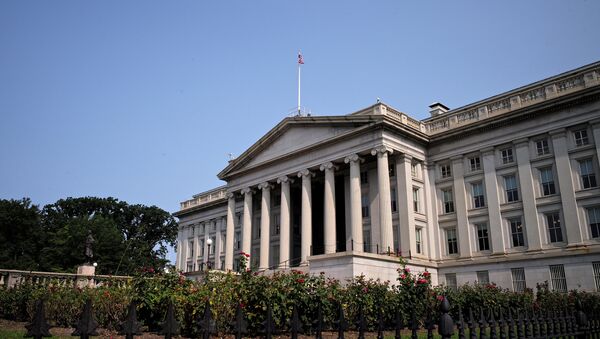Earlier this week, the US national debt hit $19.5 trillion, for the first time ever. Since January 2016, it has increased by $500 billion, according to the US Treasury.
"The total national debt when Obama leaves office in January is expected to approach $20 trillion by then," an article on Washington Examiner read.
In August, the Congressional Budget Office reported that by the end of the fiscal year (September 2016), the debt-to-GDP ratio will increase by three percentage points, to 77 percent. This will be the highest ratio since 1950. During the next decade, the ratio will reach 86 percent, according to estimates.
The debt is the sum total of annual budget deficits, plus interest. During his presidency, Barack Obama has repeatedly pledged to lower the deficit. However, during his presidency the deficit reached $1 trillion a year,and only in the last few years was it near $500 billion.
"Figuring out how to handle the national debt will be among one of the first challenges for the new president and Congress to figure out. On March 15, the debt ceiling will be in effect again, and the new ceiling will be whatever level of the debt the US has incurred by that point," the article read.
As for the presidential candidates, neither Donald Trump nor Hillary Clinton has proposed concrete steps on controlling the debt.
In April, Trump said he would settle the current debt within eight years, two presidential terms. However, many economists that Trump’s proposals, including reviewing agreements with creditors, will not be effective.
"The reason neither major candidate is talking about the debt is that neither has a reasonable plan for dealing with it. Quite the contrary, because as bad as government debt is for the country, politicians just can't get enough of it. Government borrowing enables today's politicians to buy votes by promising goodies to today's voters, while sticking tomorrow's voters with the bill. Politicians and current voters collude in kicking the ball down the road, creating a ballooning problem for future generations," an article on US News noted.
"The greater the federal debt, the more pressure the Federal Reserve feels to hold interest rates low," it added.
Even a one-percentage point increase in interest rates on a $20 trillion debt would add $200 billion a year.
At the same time, US Treasuries remain one the most reliable financial instruments in the market.
Earlier, the US Treasury published detailed information on the main holders of US debt, for the first time since the 1970s. China is the biggest holder of US Treasuries ($1.244 trillion). It is followed by Japan ($1.137 trillion) and the Cayman Islands ($265 billion). Russia is among the top-20 holders, with $86 billion.





